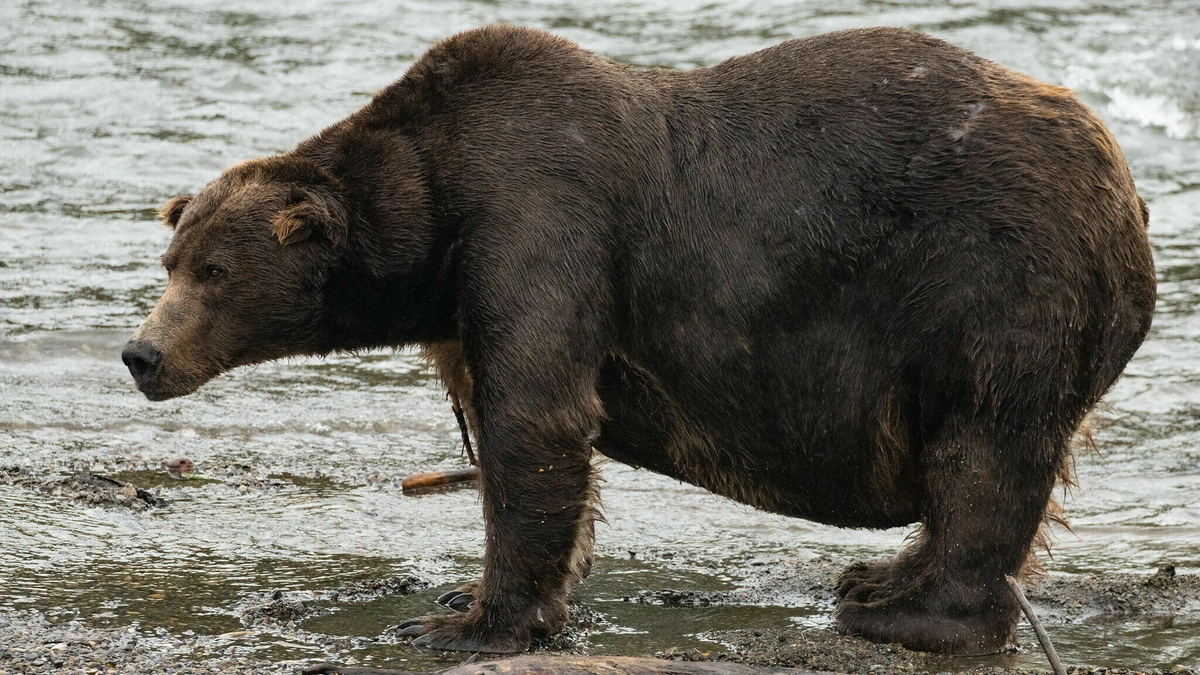Okay, let’s be honest, when you first hear about Fat Bear Week , it sounds kinda silly, right? Pictures of chunky bears vying for online votes? Seems like a lighthearted distraction. But here’s the thing: it’s actually a really powerful indicator of the health of the Bristol Bay watershed and, by extension, the overall well-being of the Alaskan wilderness. And that has implications that stretch far beyond just adorable photos.
The “Why” Behind the Weight | More Than Just Fluff

So, Fat Bear Week isn’t just a popularity contest. It’s a celebration of survival. These bears, specifically the brown bears of Katmai National Park , are bulking up for winter hibernation. The fatter they are, the better their chances of surviving the long, cold months ahead. And their success is directly tied to the availability of salmon.
But wait, there’s more. The size of these bears is an indication of how healthy the ecosystem is. If the bears are doing well, that means the salmon runs are strong, which means the rivers are clean, and the entire food chain is thriving. Think of them as furry, four-legged barometers for the health of an entire region. What fascinates me is the connection. It’s not just about the bears; it’s about everything.
According to the National Park Service , the competition educates the public about the park’s ecosystem. Understanding how important these bears are to the ecosystem as a whole helps with conservation efforts.
The Salmon Connection | A Critical Food Source
The real MVPs of Fat Bear Week ? The salmon! The Brooks River salmon are the lifeblood of these bears. The more salmon available, the more the bears can eat, and the fatter they get. A healthy salmon run indicates a healthy river system, free from pollution and other environmental stressors. This is where things get serious.
Consider the potential threats to the salmon population: climate change, habitat destruction, overfishing. Any one of these factors can have a devastating impact on the bears. So, when we celebrate Fat Bear Week , we’re also acknowledging the importance of protecting the salmon and their habitat. Explore more on conservation efforts.
Climate Change and Its Impact
Let’s be real climate change is the elephant in the room, or rather, the melting glacier in the river. Rising temperatures can disrupt salmon spawning patterns, alter river ecosystems, and increase the risk of disease outbreaks. All of which can lead to fewer salmon and, you guessed it, skinnier bears. A common mistake I see people make is assuming that the effects of climate change are far off in the future. They’re not. They’re happening right now, and Fat Bear Week is a tangible way to see those impacts.
How You Can Make a Difference
Okay, so you’re probably thinking, “What can I, a regular person sitting on their couch, possibly do to help?” Well, the good news is, plenty! Supporting organizations that work to protect the Bristol Bay watershed is a great start. Reducing your carbon footprint, advocating for climate-friendly policies, and spreading awareness about the importance of salmon conservation are all ways to make a difference.
Another thing: vote with your wallet. Support businesses that prioritize sustainability and responsible fishing practices. Every little bit helps. Check out these ideas to help make a difference.
The Future of Fat Bear Week
Fat Bear Week might seem like a quirky online event, but it’s a powerful reminder of the interconnectedness of our planet. It’s a celebration of resilience, a call to action, and a reminder that even the smallest actions can have a big impact. The Katmai Conservancy works with the National Park Services to help improve bear habitats. Let’s hope that future Fat Bear Weeks are filled with even fatter, healthier bears, a testament to our collective efforts to protect the wild places and creatures that make our world so special.
FAQ About Fat Bear Week
What exactly is Fat Bear Week?
It’s an annual online event where people vote for their favorite fat bear at Katmai National Park in Alaska. The bear who has gained the most weight in preparation for winter hibernation wins!
When does Fat Bear Week typically take place?
Usually in late September or early October.
Where can I see the bears and vote?
Visit the National Park Service’s Katmai National Park website to view the bear profiles and cast your vote.
What happens to the bears after Fat Bear Week?
They go into hibernation for the winter, relying on their fat reserves to survive!
Why is it important to conserve the Bristol Bay watershed?
It’s a vital salmon habitat, which supports the bear population and the entire ecosystem.
What can I do to help protect the bears and their habitat?
Support conservation organizations, reduce your carbon footprint, and advocate for responsible fishing practices.




